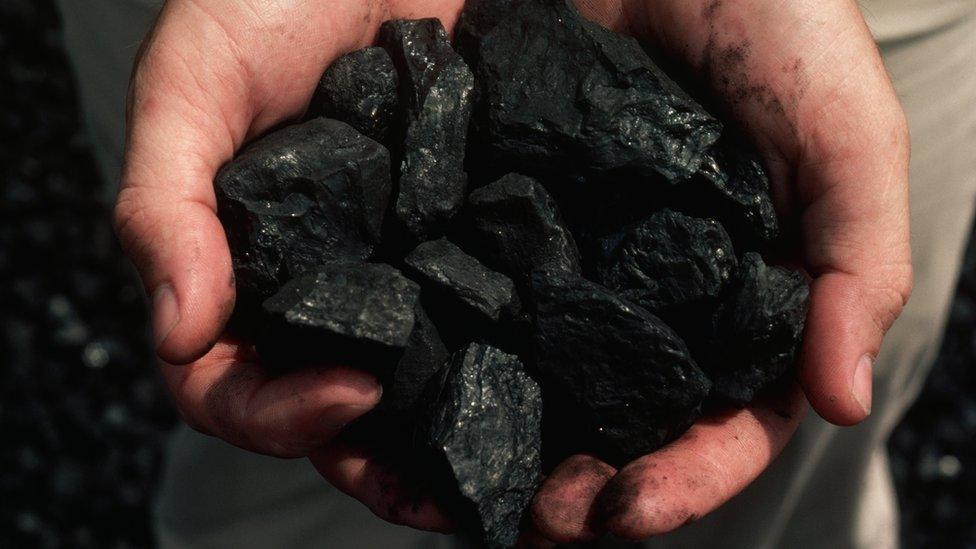COP26: Why is coal such a big issue in climate change talks?
- Published
- comments

Coal was one of the big issues of the COP26 climate conference and one of ten big pledges from countries has been an agreement to "phase down" coal.
It is the first time the fossil fuel has been mentioned in a climate change agreement.
So what exactly is coal and why is it so damaging?
What is coal?
Coal is a shiny black rock found deep underground, formed by ancient trees and plants that have been squashed under the pressure of layers of rocks for millions of years.
Like oil and natural gas, it is often described as fossil fuel. Fossil fuels were formed from the remains of living organisms millions of years ago and they release heat energy when they are burned. They are non-renewable, which means they can only be used once.
Coal mining is the process of taking coal out of the ground.
What is coal used for?
There are three coal power stations in the UK
Coal is used for power, heat and electricity.
Britain has used coal for power since the Industrial Revolution in the 18th Century, but has moved away from coal to more renewable sources.
It used to be used by people to heat their homes, but the government stopping the sale of coal for fires and stoves and it will be banned from 2023.
Although just a small percentage of the UK's electricity comes from coal, it supplies over one-third of global electricity and is used in industries such as iron and steel.
What is wrong with coal?
Coal is the most polluting way of producing energy. When it is burnt it lets out greenhouse gases, mostly carbon dioxide (CO2). It releases more carbon dioxide than oil or gas.
These gases trap the Sun's heat and cause the planet's temperature to rise.
In 2020, coal was responsible for nearly 14 billion tonnes of global carbon dioxide emissions, according to research from the Global Carbon Budget.
That's 40% of the world's total carbon dioxide emissions for 2020.
Coal also produces toxic elements like mercury and arsenic, and small particles of soot which contribute to air pollution - which is bad for humans, plants and wildlife.
So why do countries still use coal?
Countries like China are still very dependent on coal
Coal is one of the cheapest ways to produce energy, which is why many countries want to continue using it.
The countries which are most dependent on coal are the US, China and India.
The UK has promised that from 2024 it will no longer use coal to generate electricity.
China is the largest producer and consumer of coal in the world and has over a thousand coal power plants.
What plans are in place to stop using coal?
COP26: Kids around the world give their message to world leaders
At COP26 one of the biggest pledges was to reduce the use of coal globally, but the pledge was weakened from an earlier wording -of 'phase out' which required countries to work towards stopping the use of coal altogether.
India and China argued this would be impossible for developing countries that can't afford alternative sources of fuel or more fuel efficient technologies.
- Published11 November 2021
- Published9 November 2021
- Published9 November 2021
